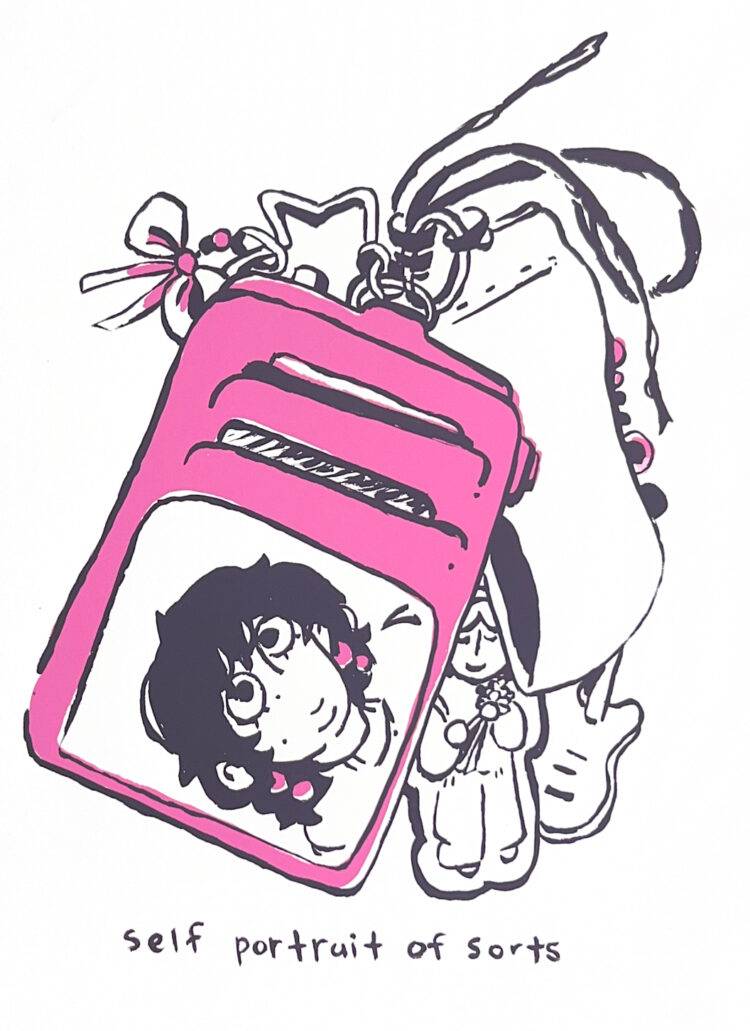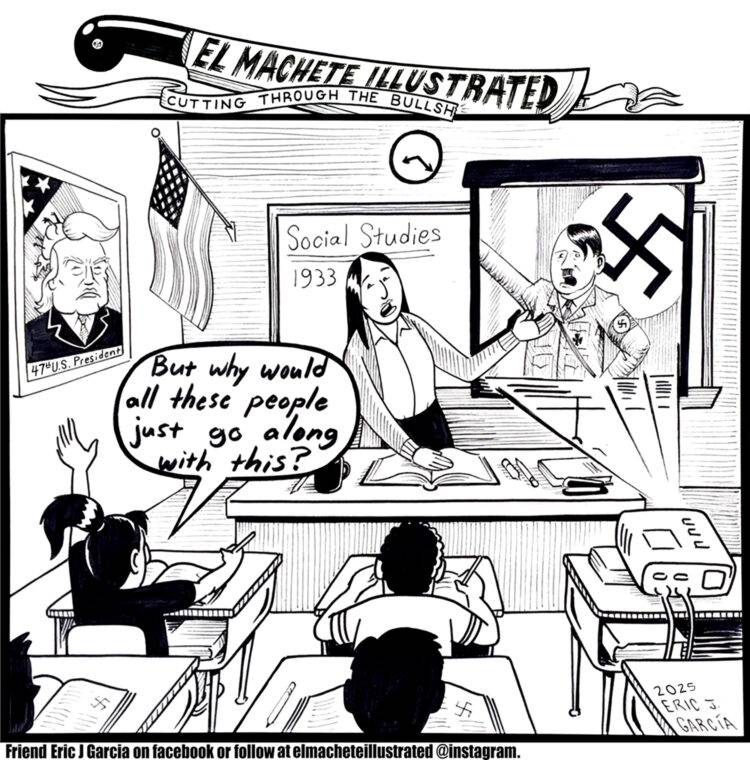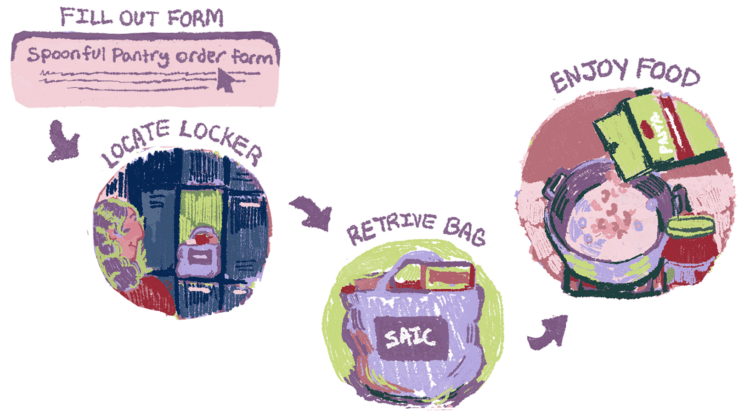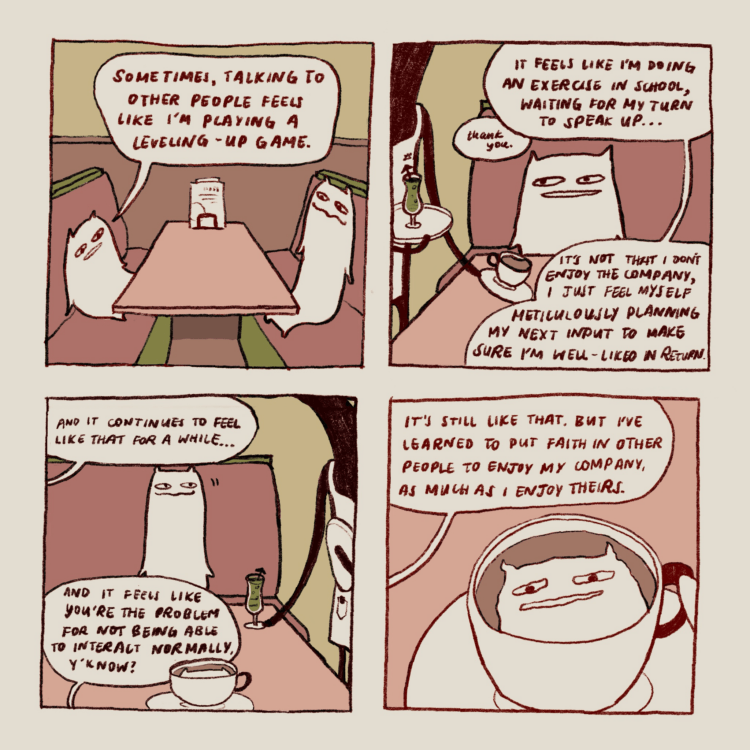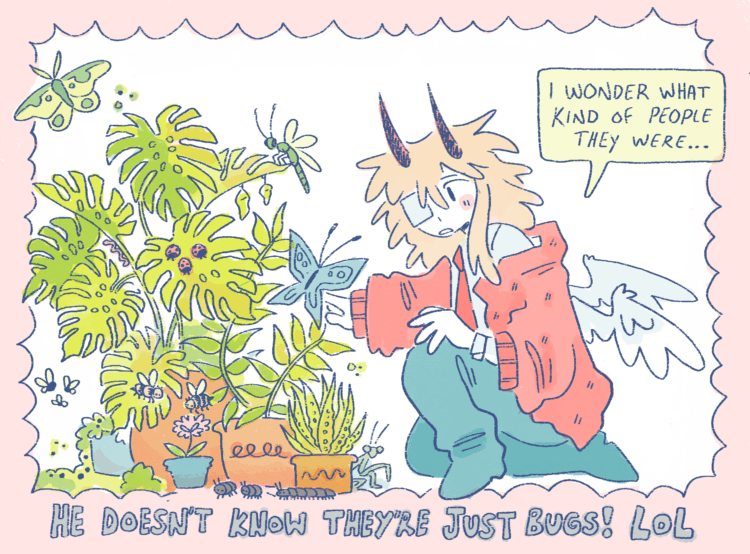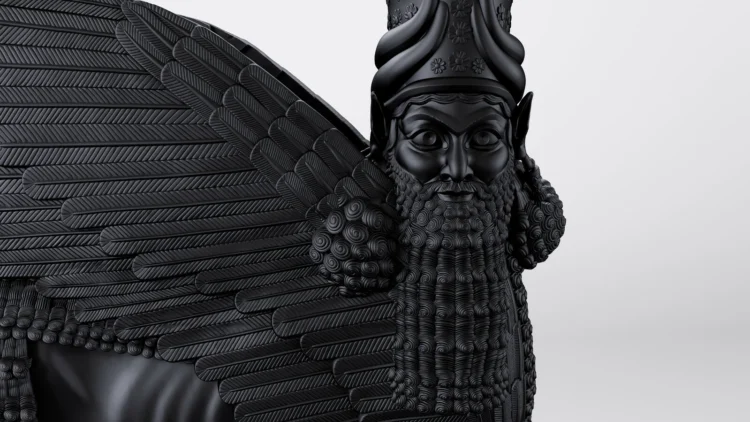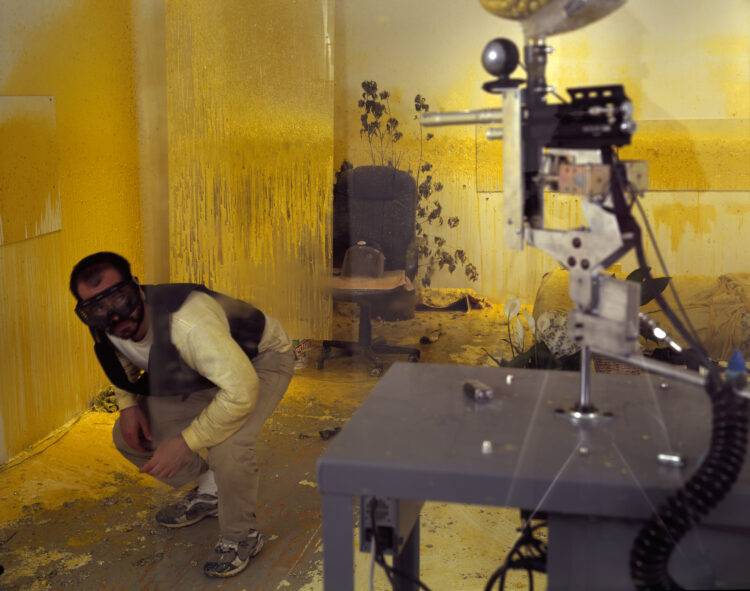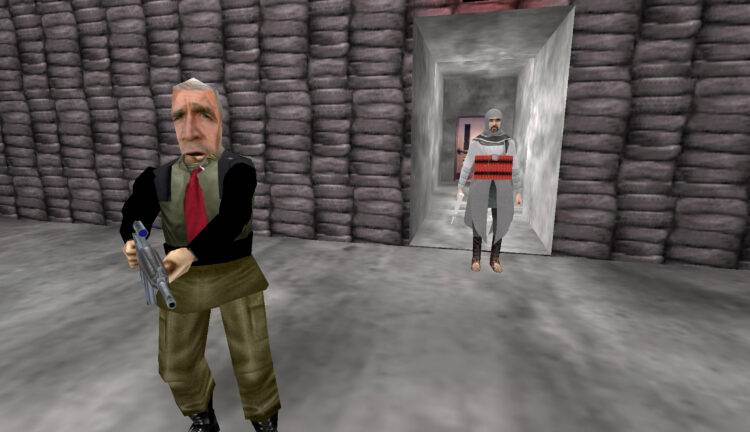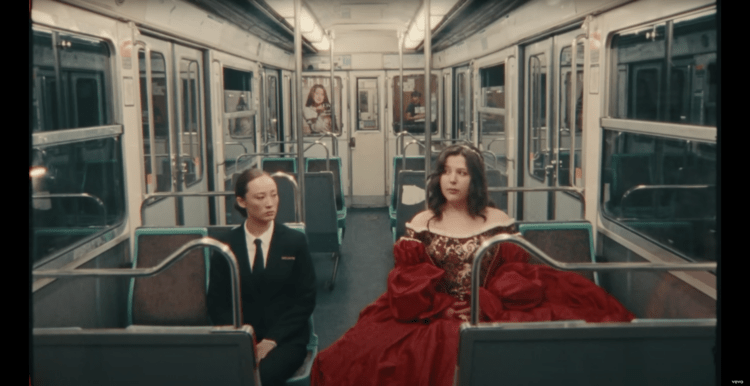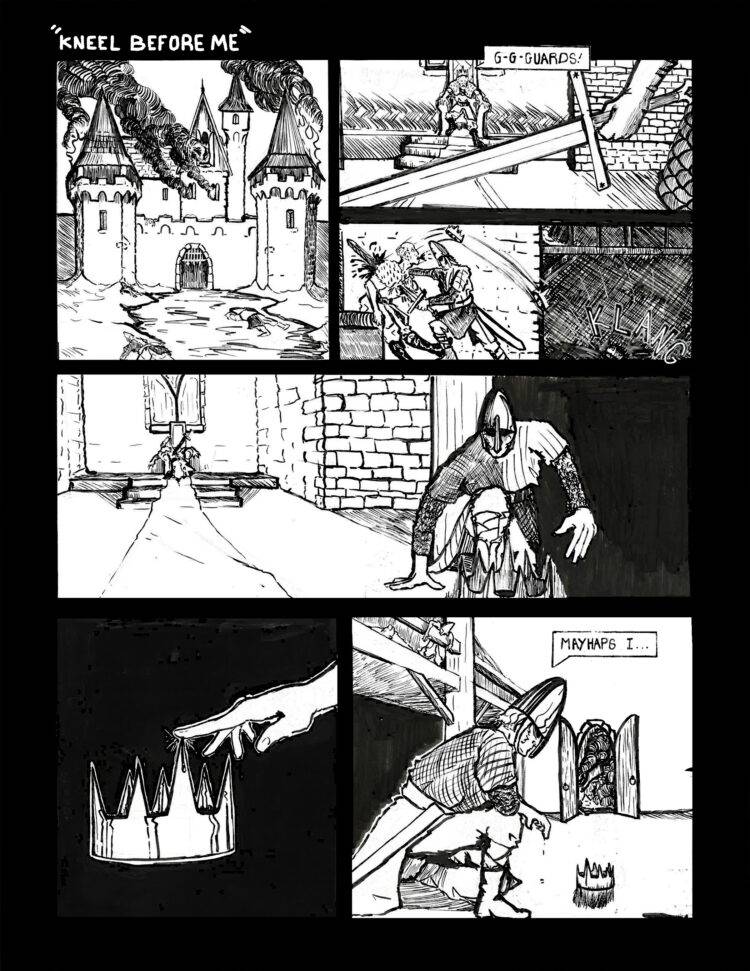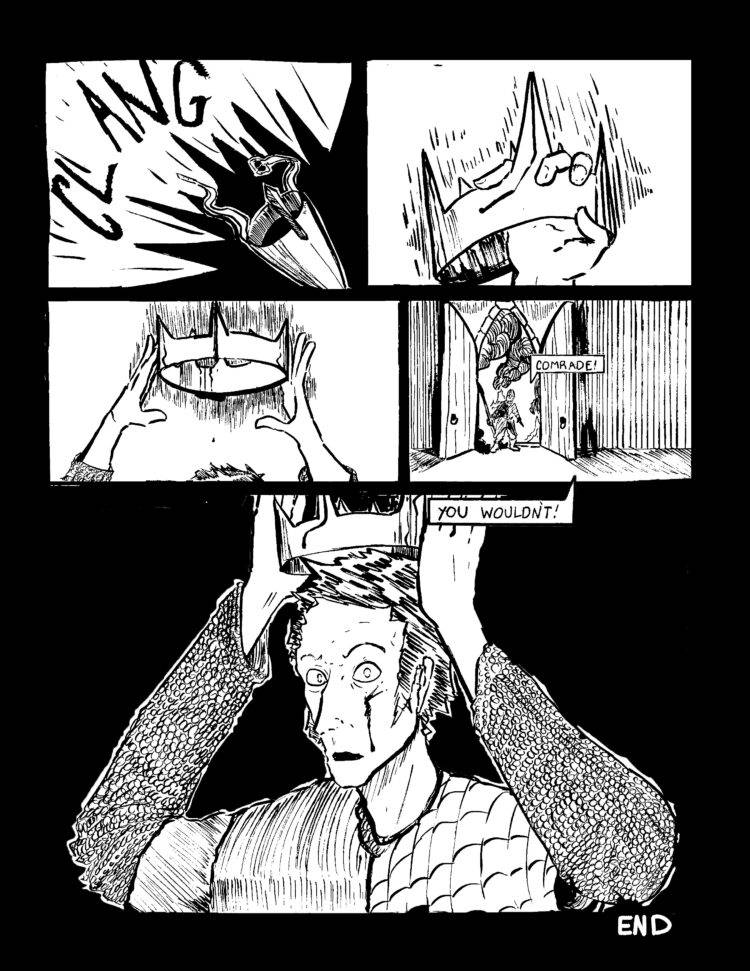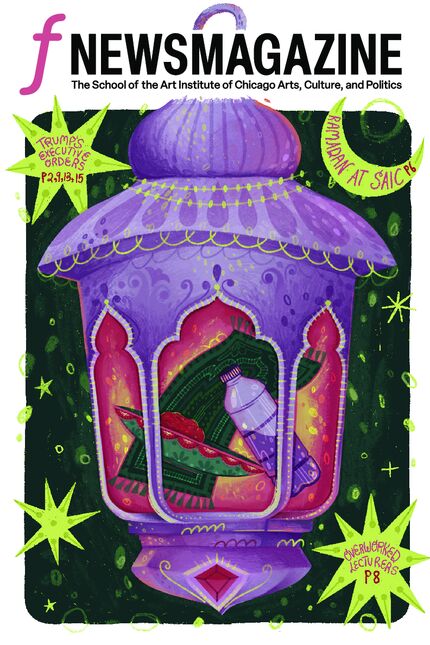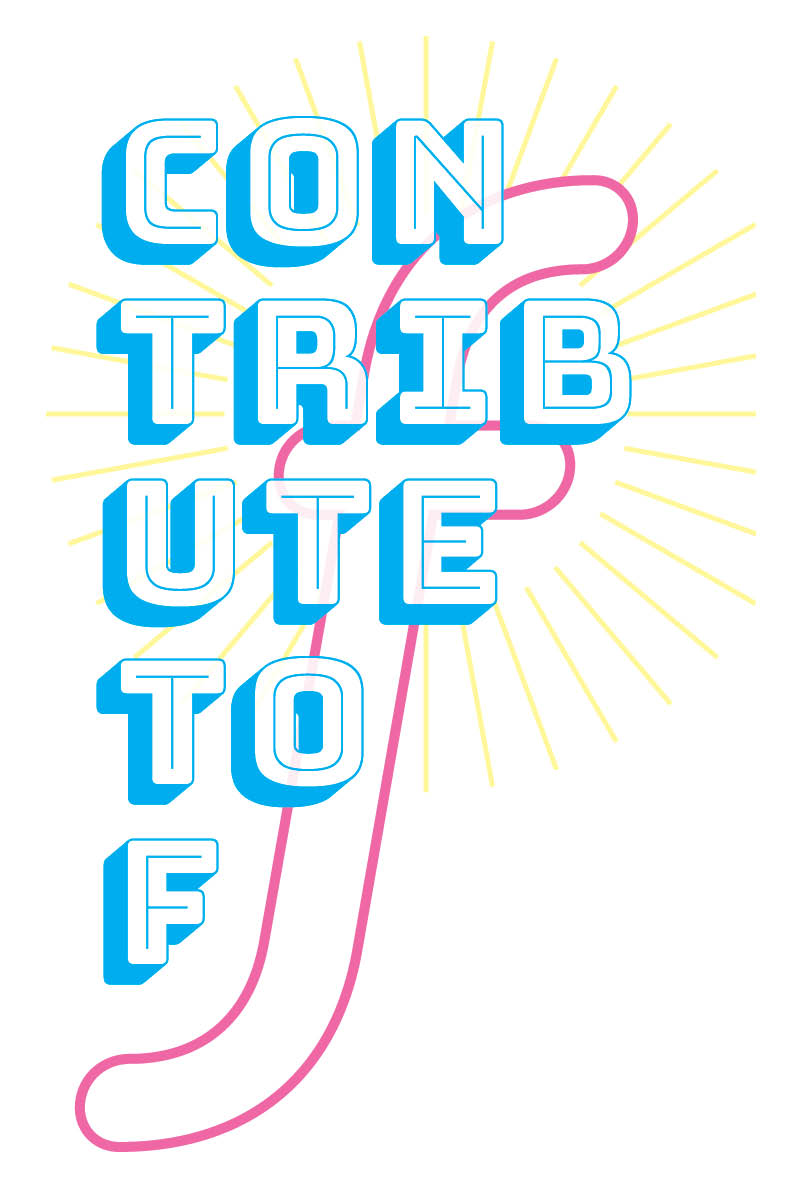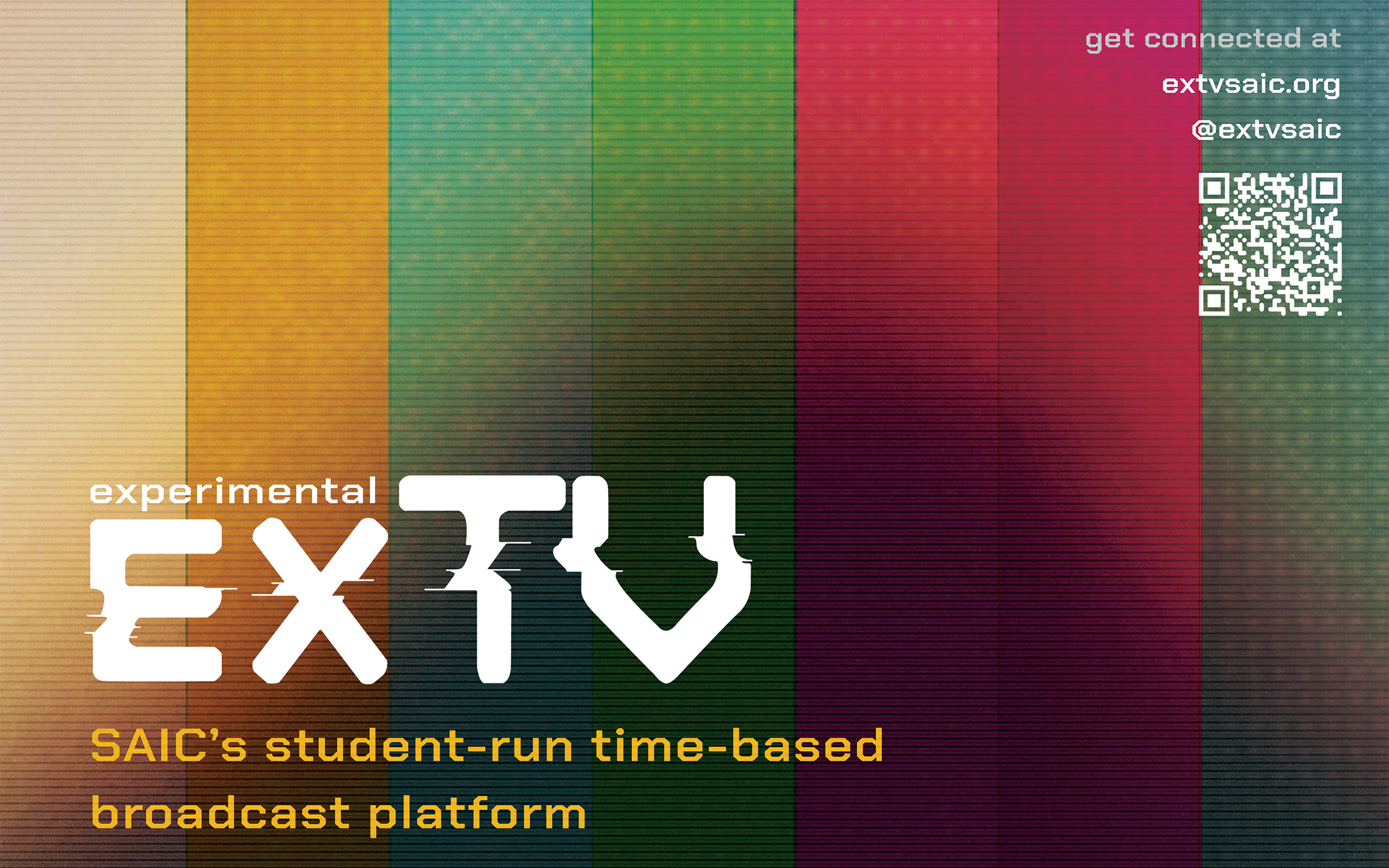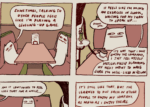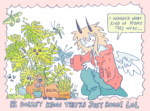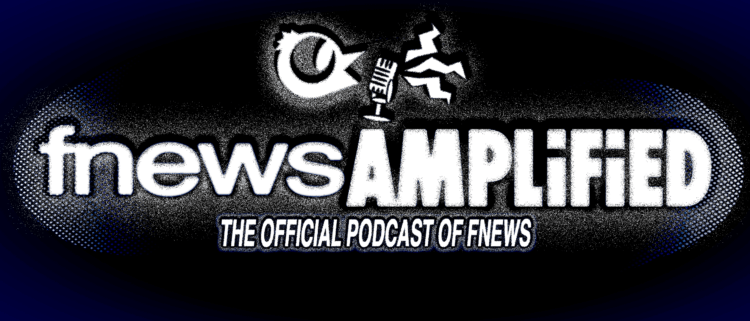
F News Amplified: Egg Horoscopes, An Exercise in Non-Didactic Anti-Divinity
Audio Player
This podcast is also available on Spotify.
Transcript:
Egg Horoscopes: An exercise in non-didactic anti-divinity
Content Warnings: brief mentions of kink and BDSM
I sit patiently. Staring at the red and auburn-lit walls coated in a thick layer of grime and salt. The light fixtures, yellow and red stained-glass flowers with a smattering of dead bulbs, [music begins] reflect an uncertain glare against the thoroughly yellowed laminated menus. The only other light comes from the fluorescent light in the kitchen, and the backlit menu on the wall over the bar which holds a history of dinner items and prices that haven’t been accurate for decades. Finally, my food comes: two pancakes, hash browns, two sausage links, toast, and three, perfect, sunny-side-up eggs. The man, or the woman, refills my coffee, and I pay as little attention to the overflow of hot, watery, brown sludge spilling onto my hand as I did to the gender of whoever poured it. Because I can’t stop looking at these perfect eggs.
As a writer, I have long since come to the conclusion that imagery is a lie. Not that imagery doesn’t exist, but rather that imagery is used by writers in place of truth. It’s great for fantasy or sci-fi, but when describing a real-life experience, it is often criticized for being “too flowery;” the fiction becomes too apparent when the writer is trying to make something easier to understand for the reader. When we, the writers, use imagery to be didactic, we sacrifice a part of our heart, diluting the blood of our story or message so that it may be easier, better consumed by our audience. The fucking vampires. Everyone thinks they crave purity, but in truth, it bores them. No one wants the raw truth, audiences cook it, fry it, boil it, or scramble it to make it go down easier. And the publishers, well, they’re even worse.. They make it more palatable to their own needs and their own experiences, and they worry not for the writers, for whom they often wish to be killed and replaced by robots.
Another thing I think is a lie: divinity. [Music changes in tone] Not the idea of holiness or beauty beyond our understanding. I’m not talking about what is or is not divine. I know that kind of divinity. I have been under whips and chains, and have had fire brought close to my skin. I have been tied up and gagged and called a million terrible things. I have been beaten, I have been asphyxiated, and I have been thoroughly, thoroughly scrambled. I have seen divinity many times, and through pain, I have seen glimpses of what I consider to be god any time she is in the room. I mean I don’t believe in seeing, interpreting, or even trying to understand the future. Divining itself, I don’t believe in.
I dissociate while trying to decipher a meaning to the shapes and patterns of bruises she left on my neck and back that I cannot see as syrup drips down from my plate and onto my lap. I regain consciousness only to find that I’ve poured almost the whole bottle onto my plate, drowning everything in a caramel haze eerily similar to petrified mammal remains under amber. I thank god that the eggs, the perfect eggs, were on their own plate. I realize that everything I eat is yellow or brown.
One thing I do believe in is that you can tell a lot about a person based on how they take their eggs. I don’t believe in conventional divinity, like zodiacs or tarot cards, but I believe in choices, patterns, habits, and behavior. It’s not about mysticism to me, the egg thing I mean, it’s about paying attention to what people do, and what they do a lot. It’s about character study to me much more than divination. It’s not about seeing someone’s future; it’s about assessing the present, and knowing that there lies a truth that cannot be hidden. Because there is no way to ironically eat an egg. You simply eat it the way you order it, just as you accept the consequences of any action, decision, or choice you’ve ever made or taken.
Here is your egg horoscope.
Over-Medium:
If you take your eggs over medium, then you don’t like to make things difficult for people when you don’t have to. When your order is wrong, you rarely send it back. Not because you are a people pleaser. Quite the opposite in fact. You are an insatiable yearner, but a yearner not for what can be obtained or controlled, but for what must be done or created by your own hand. Any meal is a distraction, and any delay in the finishing of that meal makes it worse. This is because you must get back to “The Work.” Anything that is not “The Work” keeps you from “The Work.” You say over-medium, not because you want your eggs over-medium, but because it’s the easiest one to say and one of the easiest ways to make them. You just want your eggs, and you want them now. “The Work” compels you.
You are a force of nature.
Sunny Side Up, hot sauce optional:
You are a servant to your own decadence and lust for life. You are not a yearner, but you are craven. In a past life, you were starved or had very little. Rarely did you see your desires fulfilled, and so, you did not yearn. That part of you is dried up along with the fruit of the trees and water of the springs. And so, this life has been a repayment of sorts. Now, you savor even the smallest morsels of what you desire. You regularly partake in treating yourself whenever possible and you relish and take solace in quiet moments of joy when no one is around. You devour a spicy, runny, yolk as if it were your oxygen.
You are the Vagrant Hedonist.
Egg Salad Sandwich:
You are a creature of habit. You enjoy a routine, sure, but you detest self-maintenance. So-called “self-care” activities and regular meditation feel like tremendous chores to you, even though your soul deeply desires them. Like an egg salad sandwich for lunch, you are often left hungry; unsatisfied, and yearning for so much more. But your hunger will never be satisfied, not because of the heat of your flame, but because of the quality of coal you feed it.
You are the Hermit of The Abyss.
Scrambled:
You yearn for simplicity, not because your needs are simple, but because the needs of your heart have not yet been met. You order what you know the cook cannot mess up because you are often disappointed by the lack of care and attention offered to you in a world that grows ever more desensitized and cold to itself. Those around you wear layer after layer of irony and nonchalance, and the cognitive dissonance of their blissful indifference sets within you a quiet rage that you never verbally decree. I implore you to have the courage to order the eggs you truly want or to learn to make the best possible eggs you can for yourself. You deserve better eggs.
You are the Lover Unrequited.
Jammy, tiger, or Mayak. The Fancy Eggs:
You enjoy a release or a reward no matter how long the process may take, and no matter how much work it may require. Your capacity to labor for what you love is matched by few and the splendors begotten by your work are matched by none. You are not a perfectionist, because you don’t have to be. Everything you touch is perfect. You are someone who truly knows that the journey is as sweet as the destination if not sweeter.
You are the Priestess Most High.
Over Easy:
Hahaha, no it isn’t. This isn’t anyone’s favorite style of egg. No. Just, no.
Over Hard:
Now you’re just playing. That one isn’t even real.
Fried Medium:
You have traveled far and wide, but have finally found refuge. You love where you have landed, but not so secretly, a part of you yearns for home. What some may mistake for a folksy disposition is more accurately, a longing. Longing for what has slipped through your fingers like long strands of dead grass along the edges of dirt roads between windmills, whipping against your hands while you run, arms outstretched, against them.
Go home, The Pilgrim.
Deviled:
You love to host, and your generosity is unmatched. This is because it is impossible to make only one deviled egg, and therefore, one who loves deviled eggs enough to make them must too enjoy the act of sharing them. And one who enjoys deviled eggs enough to make them well is loved and admired by all. A true lover of deviled eggs is not one who skimps on the dijon.
You are The World.
Soft Scrambled with Cheese and Cholula:
You have conquered much, tried many, but only ever truly enjoyed few. But after years of narrowing and narrowing, you have found perfect balance. While others simply exist within the world, you have become the god, the guardian, and the worshipper of your own realm.
You are The Plethora of Overfull Cups.
Over Medium (repeated):
Over medium. Again. Perhaps you heard what I said the first time and you thought “This isn’t me. I’m not a yearner, I don’t make anything really, or if I do I’m not that fucked up about it. I just like over-medium eggs because they’re the best.” Then this is for you. You don’t strive for perfection, because you’ve already sought it long ago and found it. You know exactly what you want and you are sure of yourself much more than others. You execute with unwavering disposition and this has made you many enemies but also given you the perfect friends. You do not need a fortune because you know where you are going and quite frankly, you can’t be stopped. No one will change your mind, and those who know you best have long since given up.
You stretch your finger out toward the sun, and your steed pulls you towards it without stopping for even a single second. You are everything you’ve ever wanted to be and every desire you have ever had or will have is made manifest by you and you alone.
You are The Chariot of Fire.
Conclusion: Poached.
I sit. Impatient and unsatisfied; having finished my eggs, my perfect, sunny-side-up eggs, and have no more to eat. I pick at my syrup-drenched breakfast and start panning for sausages. I think about what my egg order would be, and what that might mean. The sunny-side-up eggs are not what I would order, by the way. Make no mistake. I ordered them this way because they are easier to make. While I do like them, they’re less tasty than my actual favorite egg, the poached egg, but most diners like this don’t know how to make them. Poached eggs are hard to pull off. You have to time them just right and pull them out when they’re ready; no sooner, no later. It’s considered too much of a hassle for most kitchens, and usually when I ask for them at restaurants, they either turn me down outright or they just make them bad. One time, at a Denny’s, I had poached eggs that came out shriveled up and were seemingly, and mysteriously, drained of any yolk, but they still appeared to be sealed from the outside. Sometimes a place can poach an egg just fine, but when you go in and order just a black coffee and three poached eggs, they look at you funny. They fulfill the order, but you can tell they think you’re strange. I stopped ordering my eggs poached a long time ago. To me, the sunny-side-up is a compromise.
I wonder what that tells you about me. I wonder what revelations there are to be had about one who eats in silent disapproval? Someone who wants, but contends with the wanting. The craving. The yearning for something that does not, and will not, exist in a diner; while perfectly good eggs sit right in front of them.
And those eggs were truly perfect.
But at least, in the meantime, I have something to look forward to.
This podcast is a production of F News, the official Newspaper of SAIC, The School of the Art Institute of Chicago, and is paid for by the university. This show, and this episode specifically, is written and recorded by Gren Bee, with production from Sid Gard, Alex Lee, and oversight from Sophie Goalson. Music is provided by Drake and the Beatles and is completely royalty free, and for public use. Also — thank you to Flesh Simulator who actually contributed a lot more of the music to this episode than in past episodes. Shout-out, if you want to ise that music too, you can go to their patreon at FleshSimulator.com/patreon. That’s wrong. Patreon.com/FleshSimulator. There we go. Thank you so much for listening, this is F News Amplified.
Read More →

